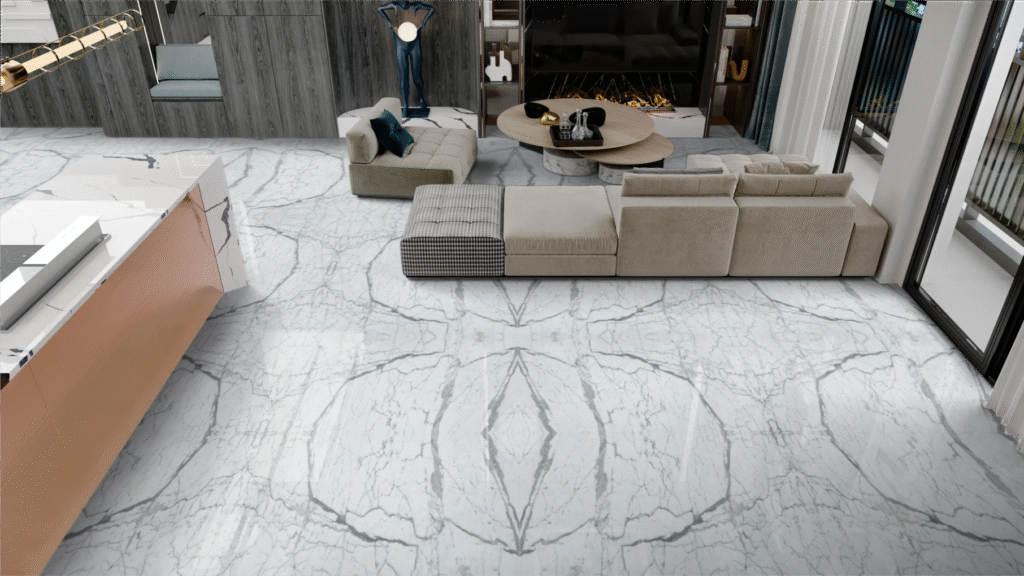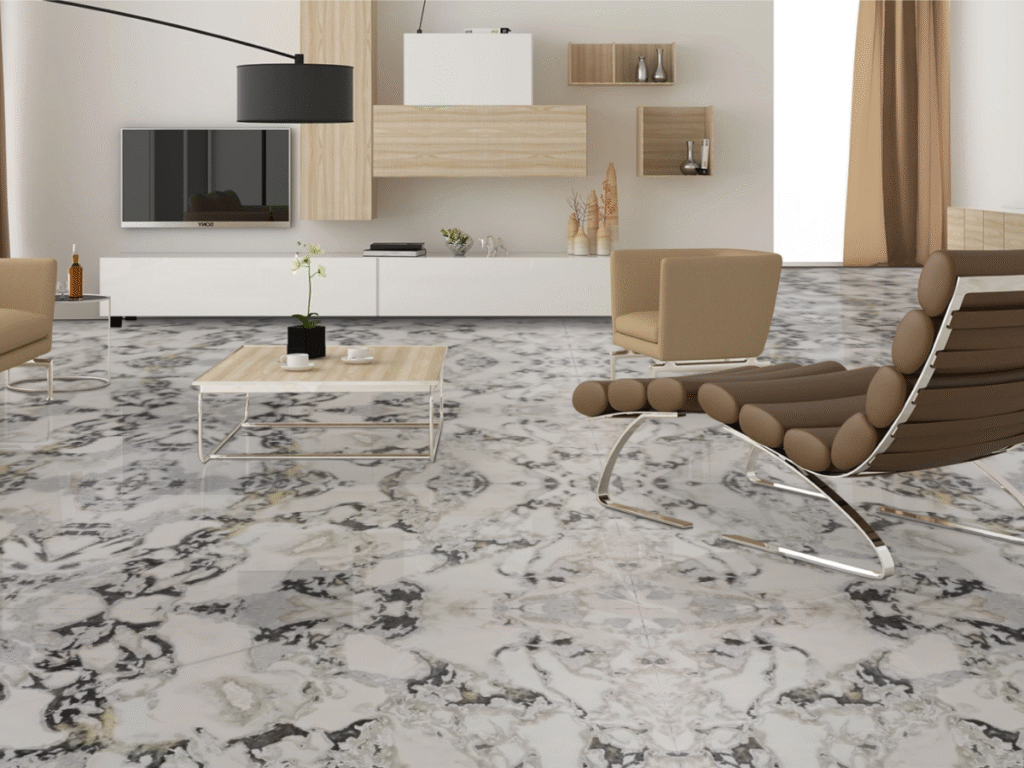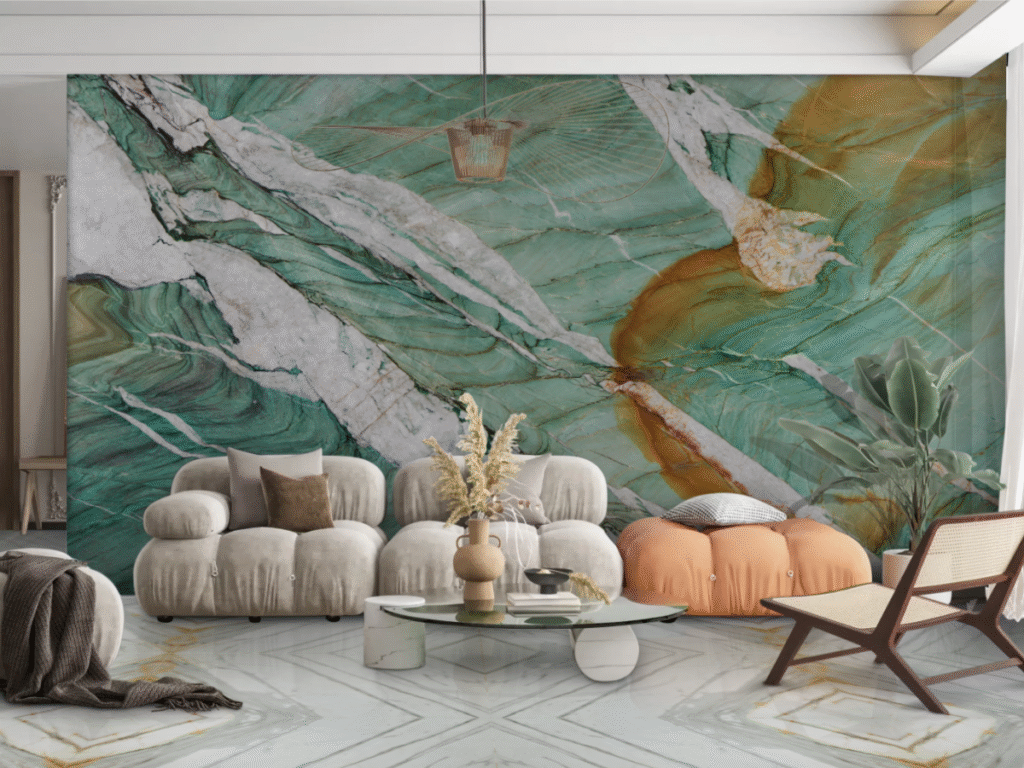Marble has long been a symbol of luxury, elegance, and timeless beauty in architecture. In India, homeowners, architects, and interior designers face a crucial question when it comes to flooring: “Which marble is better – Indian or Italian?”
With dozens of varieties available in both, choosing the best marble for flooring isn’t just a matter of taste it’s a strategic investment in your property. In this comprehensive guide, we’ll break down the differences, pros and cons, cost comparisons, and expert advice to help you confidently choose between Indian marble vs Italian marble.
What is Marble Flooring?

Marble is a natural metamorphic rock composed primarily of calcite. Over centuries, it has been used in palaces, temples, and now, modern homes due to its:
- Aesthetic appeal
- High durability
- Cool surface (ideal for tropical climates)
- Prestige value
Marble flooring is popular in Indian homes for its natural elegance, cool underfoot feel, and long-term property value. However, the type of marble you choose can significantly impact maintenance needs, costs, and aesthetics.
Indian Marble: Overview, Features & Varieties

Indian marble is quarried locally in regions such as Rajasthan, Gujarat, Andhra Pradesh, and Madhya Pradesh. It is widely available, versatile, and comes in multiple shades and patterns.
📌 Key Features of Indian Marble:
- Thicker slabs (18–20mm)
- More robust for heavy usage
- Less glossy than Italian marble (can be polished)
- Resistant to water and heat
⭐ Popular Varieties of Indian Marble:
| Marble Type | Color & Features | Best Used In |
|---|---|---|
| Makrana White | Pure white, used in Taj Mahal | Living Rooms, Temples |
| Ambaji Marble | Milky white with grey veins | Bedrooms, Staircases |
| Udaipur Green | Green with streaks | Bathrooms, Decorative Walls |
| Banswara Marble | White with violet veins | Flooring, Countertops |
| Rainforest Marble | Red or Green with tree-like veins | Accent Walls, Kitchens |
Italian Marble: Overview, Features & Varieties

Italian marble is internationally acclaimed for its refined finish, luxurious look, and premium quality. Imported from Italy (primarily Carrara, Tuscany, Sicily), it’s often used in upscale interiors.
📌 Key Features of Italian Marble:
- Softer with finer grains (12–14mm thickness)
- Requires high maintenance
- Highly porous (not ideal for high-moisture areas)
- High-gloss finish with light color palette
⭐ Popular Varieties of Italian Marble:
| Marble Type | Color & Features | Best Used In |
|---|---|---|
| Carrara White | White with soft grey veins | Living Rooms, Lobby Areas |
| Statuario | Pure white with bold grey veins | Bathrooms, Feature Walls |
| Calacatta Gold | White with thick gold veins | Luxury Spaces, Wall Cladding |
| Botticino | Beige with uniform texture | Bedrooms, Hallways |
| Travertine | Creamy texture, unique pitted surface | Feature Walls, Columns |
Indian Marble vs Italian Marble: Detailed Comparison
| Feature | Indian Marble | Italian Marble |
|---|---|---|
| Availability | Locally sourced | Imported from Italy |
| Price Range | ₹50 – ₹250 per sq. ft. | ₹250 – ₹1,200+ per sq. ft. |
| Appearance | Bold veins, earthy tones | Softer tones, fine veins, high gloss |
| Thickness | 18–20 mm | 12–14 mm |
| Durability | More durable, ideal for high-traffic areas | Softer, more prone to scratches |
| Porosity | Less porous (better water resistance) | More porous (requires sealing) |
| Maintenance | Low to moderate (polish every 2–3 years) | High (requires sealing, regular polishing) |
| Finish | Glossy to matte (customizable) | Mirror-like shine |
| Installation Cost | Lower (local artisans available) | Higher (specialized skills required) |
| Climate Suitability | Ideal for Indian weather | Sensitive to humidity, better in dry areas |
Room-Wise Recommendations
✔️ Best Marble by Room Type

| Room | Recommended Marble | Reason |
|---|---|---|
| Living Room | Italian Marble | Luxurious, glossy finish perfect for guest spaces |
| Kitchen | Indian Marble | Tough, durable, moisture resistant |
| Bathroom | Indian Marble | Better resistance to water absorption |
| Bedroom | Either | Depends on budget and theme |
| Staircase | Indian Marble | Non-slippery, high impact resistance |
| Hotel Lobby/Commercial | Indian Marble | Cost-effective, easier to maintain |
Price Breakdown: Indian vs Italian Marble
| Type of Marble | Approximate Cost (Per sq. ft.) | With Installation & Polishing |
|---|---|---|
| Indian Marble (Basic) | ₹50 – ₹100 | ₹120 – ₹180 |
| Indian Marble (Premium) | ₹120 – ₹250 | ₹200 – ₹350 |
| Italian Marble (Basic) | ₹250 – ₹600 | ₹450 – ₹800 |
| Italian Marble (Luxury) | ₹800 – ₹1,500 | ₹1,200 – ₹2,000+ |
💡 Pro Tip: Always factor in polishing, sealing, transportation, and wastage while budgeting.
Installation & Maintenance Tips
Installation:
- Always use experienced professionals, especially for Italian marble.
- Ask for book-matching if you want a mirror-effect with veins.
- Ensure the base surface is level before laying.
Maintenance:
| Task | Frequency | Tools Required |
|---|---|---|
| Polishing | 1–2 years | Professional marble polisher |
| Sealing (Italian) | 1–2 years | Marble sealer |
| Cleaning | Daily | pH-neutral floor cleaner, soft mop |
| Avoid | — | Acids, strong detergents, bleach |
Sustainability & Eco-Friendliness
- Indian marble is more sustainable due to local sourcing and lower transport emissions.
- Italian marble has a larger carbon footprint, though some variants are certified under EU environmental standards.
Expert Recommendation: Which Marble is Best?
✨ For luxury homes and aesthetics-first design: Choose Italian marble for its sleek, elegant finish.
💼 For long-term durability, lower cost & practicality: Go for Indian marble – especially in humid regions or heavy footfall areas.
If budget permits, consider combining both:
- Italian marble for feature areas (living room, walls, foyers)
- Indian marble for utility & heavy-use areas (kitchen, bathroom, outdoors)
Final Takeaway
Choosing the right marble flooring is a balance between beauty, practicality, and budget. Whether you’re renovating a home or building a dream project, understanding the nuances between Indian and Italian marble will help you make a smart, lasting decision.
👉 Indian Marble = Durability + Affordability
👉 Italian Marble = Luxury + Aesthetic Value
Both have their strengths it all comes down to your priorities, lifestyle, and vision.
FAQs
➤ Indian marble is more durable and climate-compatible.
➤ Not recommended due to its porosity and stain sensitivity.
➤ Yes, it’s softer and needs careful installation.
➤ Indian marble is significantly more affordable.
➤ Yes, high-grade Indian marble like Makrana can be polished to a mirror finish.
➤ Yes, it requires sealing, polishing, and gentle cleaning.
➤ Indian marble, due to better water resistance.
➤ Polished marble can be slippery; anti-slip coatings are recommended.
➤ Absolutely! It’s a popular strategy for both cost and design efficiency.
➤ Italian marble boosts luxury appeal; Indian marble shows practical investment.


